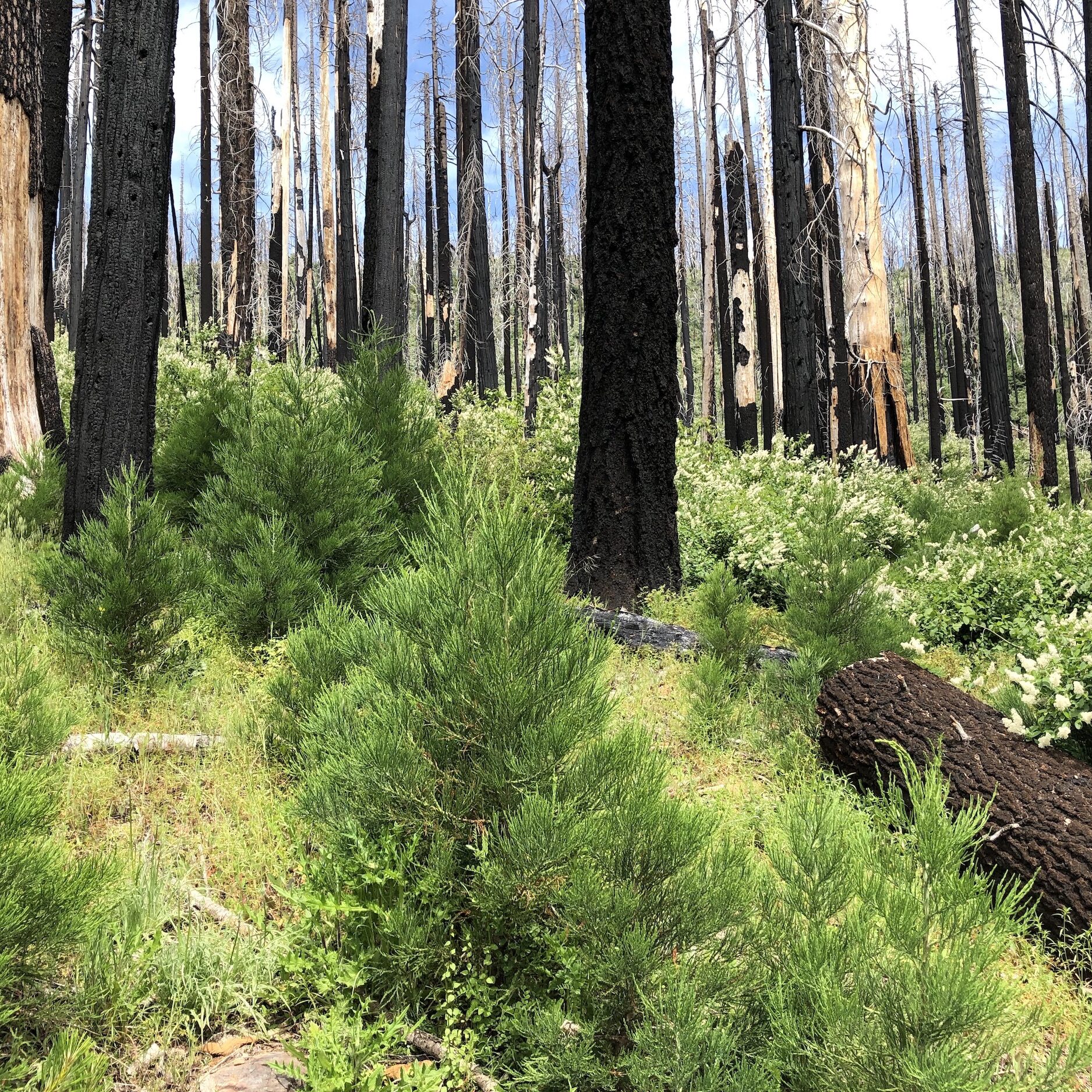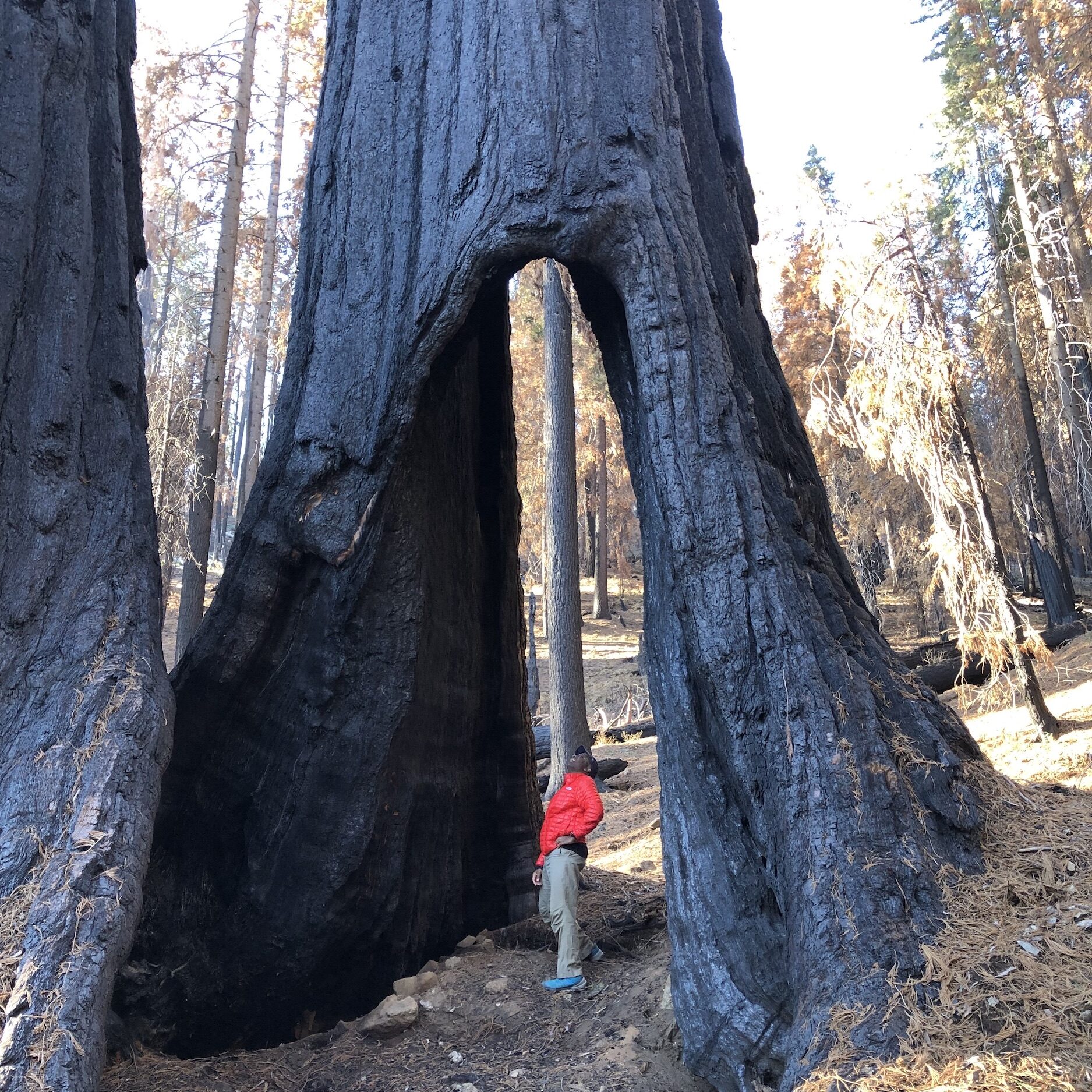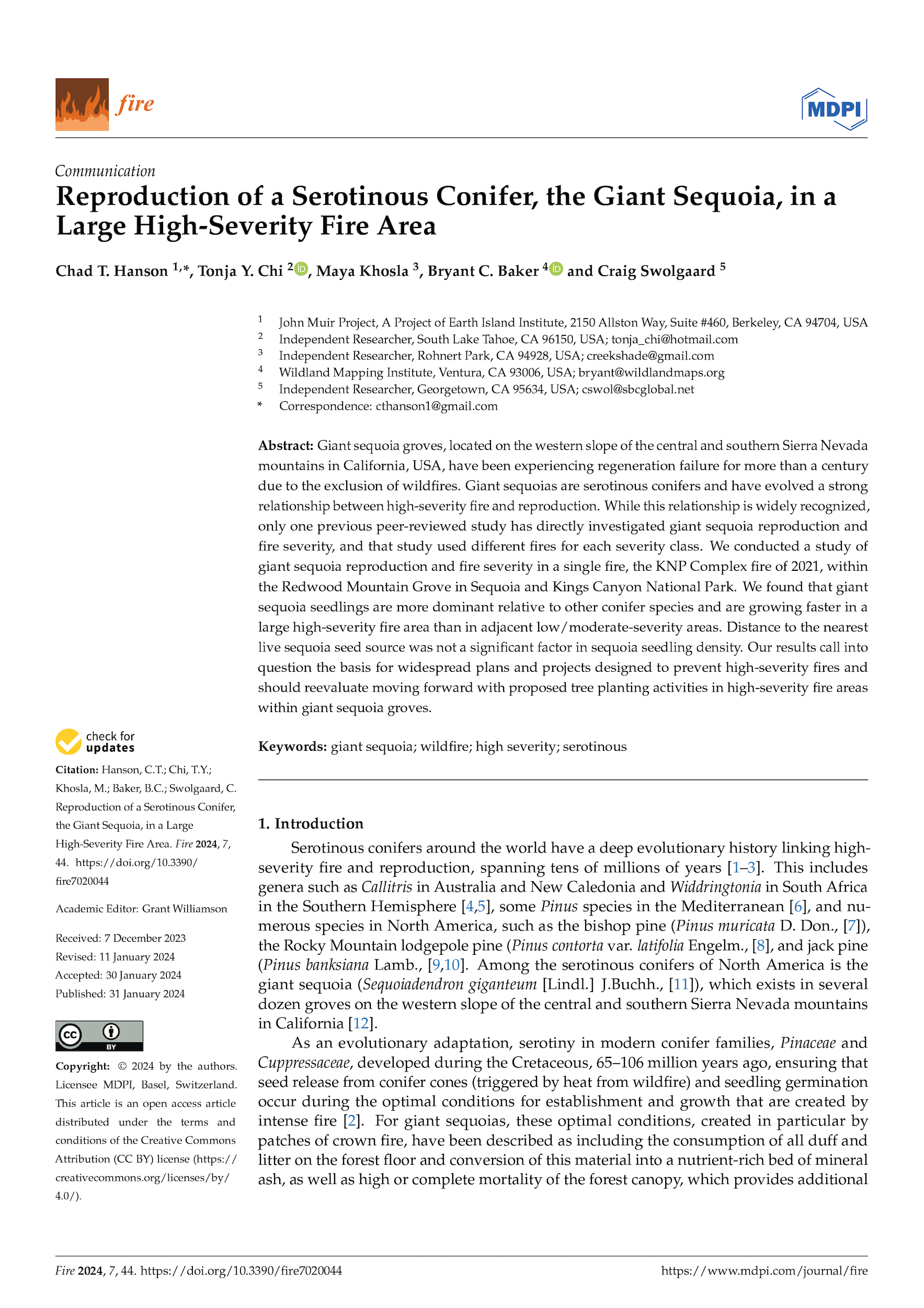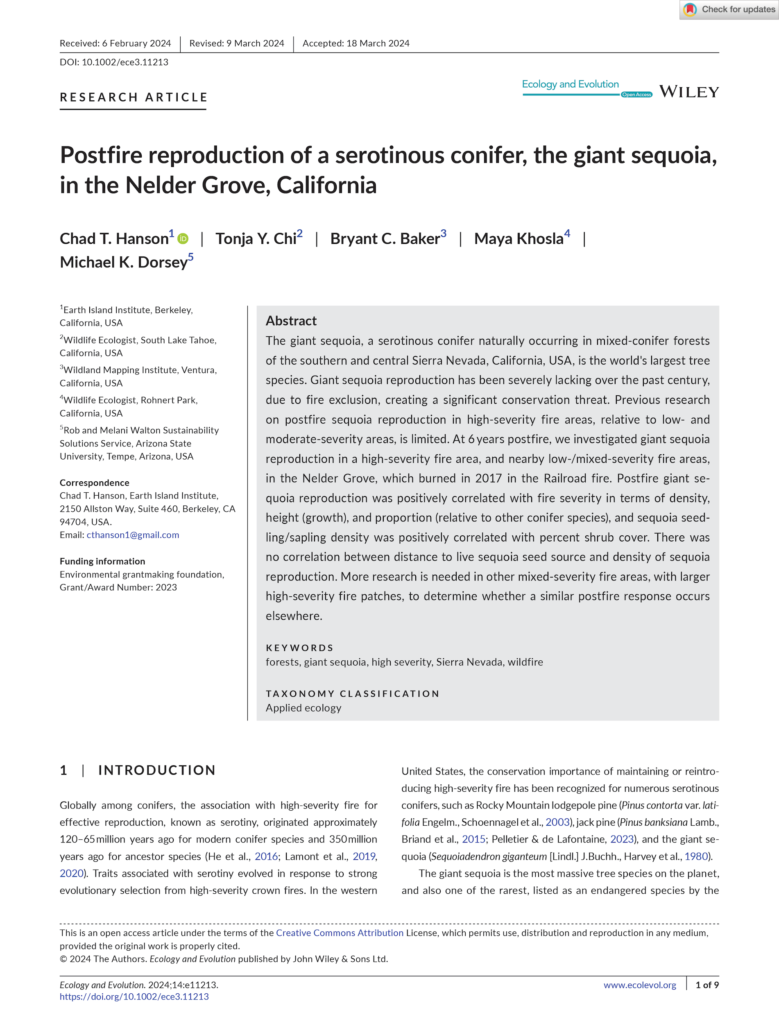Giant Sequoias Thrive in Recent Wildfires
Giant sequoias evolved to depend not only on wildfire in general, but specifically on higher-intensity wildfire, to effectively reproduce.
This evolutionary relationship goes back about 90 million years. While most of the area in recent wildfires is low/moderate-intensity, where most or nearly all trees survive, some patches of higher-intensity fire also occur, where most trees are killed by fire. It is these higher-intensity fire patches that allow the next generation of giant sequoias to grow and thrive.
However, due to a century of wildfire suppression and exclusion, the giant sequoia groves have been slowly dying off for many decades due to a massive failure of reproduction-that is, until a series of recent natural lightning fires from 2015 through 2021 burned.


The research being conducted by JMP, and our colleagues, Tonja Chi, Maya Khosla, Bryant Baker, Dr. Michael Dorsey, and Craig Swolgaard, is finding that giant sequoias are thriving in the higher-intensity areas.
This is because higher-intensity fire: a) produces sufficient heat to cause sequoia cones to release their seeds in great numbers; b) consumes the thick duff and litter on the forest floor, allowing sequoia seedlings to sink their roots into soil, and turning the duff and litter into a nutrient-rich bed of mineral ash that enhances the growth of young sequoias for decades; and c) kills most of the trees, giving young sequoias extra sunlight to aid their growth.
Specifically, the research being done by JMP and our colleagues is revealing that giant sequoia seedlings and saplings are much more abundant, grow much faster, and have a competitive advantage over other tree species, in higher-intensity fire patches compared to low/moderate-intensity patches.
We are also finding that the government's preliminary claims that recent fires had killed 20% of mature sequoias was not accurate and was exaggerated by about threefold.

Recent studies and analyses on giant sequoias
and wildfire by JMP and our colleagues:
Redwood Mountain Grove

Reproduction of a Serotinous Conifer, the Giant Sequoia, in a Large High-Severity Fire Area
Nelder Grove

Postfire reproduction of a serotinous conifer, the Giant Sequoia, in the Nelder Grove, California

